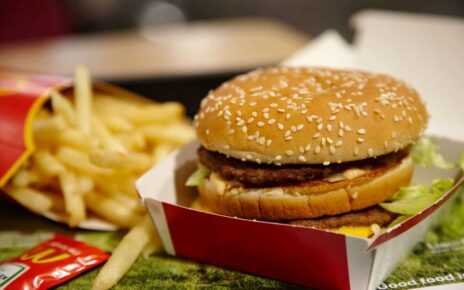What a long, strange trip the long-lost Creedence Clearwater Revival Royal Albert Hall concert album and film has taken in the half century since it happened.
The show and the on-the-road footage were recorded by the BBC during the group’s first European tour in April of 1970, but never broadcast. The recording presumably got hung up in the notorious legal battles between the group and its original label, Fantasy Records, although footage from the concert popped up at various times over the decades (even in a TV commercial for a budget Creedence greatest-hits album in the ‘80s). Even more confusingly, Fantasy released a very similar live album titled “The Royal Albert Hall Concert” before realizing that the tapes had been mistakenly labeled and the album was actually recorded ten weeks earlier and 5,000 miles away at the band’s triumphant Oakland Coliseum homecoming concert (the album was quickly retitled “The Concert”).
But after five decades of sitting on shelves, the concert and film are being rolled out in elaborate fashion, with a variety of deluxe editions centered around a 12-song album and a long-form video that includes both a brief documentary — narrated, of course, by Jeff Bridges, whose worship of the band in “The Big Lebowski” has made him the patron saint of Creedence — and, best of all, an electrifying film of the full concert (it’s available on Netflix). The Royal Albert Hall show captures the band at the absolute peak of its powers, the high-water mark of the freakishly brief superstardom that saw them scoring an incredible seven Top 5 singles and five Top 10 albums (two of them No. 1s) in just over two years, and then fading just as quickly as they had risen.
In fact, the concert film is the best document to date of what an incredible band Creedence was. Yes, their sound was based completely around the songs, singing and lead guitar of frontman John Fogerty, whose dictatorial control of the band both lofted them to overnight stardom — ironically, more than a decade after they first started playing together in middle school — and ultimately tore them apart. But often overlooked was the band’s loose but deceptively disciplined groove, honed over their many years of playing bars, proms and parties before they broke through in 1968 with a swampy cover of Dale Hawkins’ “Suzie Q.” Like their idols Booker T & the MGs, the band took the definition of “rhythm section” to heart, locking into a primal groove on the slower numbers and blistering energy on the rockers. Fogerty’s big brother Tom — the band’s original leader — embraced his role as rhythm guitarist with a spartan literalness, his playing at times resembling a percussion instrument as much as a melodic one: He played chords almost exclusively, sitting on one (often a seventh or a jazz chord) for minutes at a time with choppy strokes or a fluid strum, providing the foundation of the band’s nimble groove — even bassist Stu Cook, with his nimble melodic runs, and rock-solid drummer Doug “Cosmo” Clifford played with more flash than he did.
What makes this concert film so special is you can see the band in full flight: The setlist and playing aren’t drastically different from either of the other two live albums recorded during this period, but their nearly telepathic communication is on full display, and fascinating for almost anyone who loves watching live music. Yes, it’s John Fogerty’s band, but the bandmembers are watching other just as intently, locking eyes and locking in. While the footage of the band’s fiery set at Woodstock — also released 50 years after it happened — is almost as exciting, it’s more darkly lit (and obviously there’s a very different vibe between headlining an august venue like the Royal Albert Hall and following a shambolic set by the Grateful Dead at 2:30 a.m. at a legendary but chaotic festival).
Calling this concert the peak is no understatement: According to the recent Creedence history “A Song for Everyone,” the show was the beginning of the end. As the crowd roared for an encore that John Fogerty perplexingly refused to play (which Bridges characterizes in the film as a “ten-minute ovation”), longstanding resentments finally rose to the surface. Tom Fogerty left less than a year later, and Creedence splintered a year after that.
But on this night, roaring through blazing versions of “Born on the Bayou,” “Green River,” “Fortunate Son,” “Travelin’ Band” and of course “Proud Mary,” they were truly one of the world’s greatest bands. And 52 years after the fact you can see, more than ever, what all the fuss was about.
Read More About:
Source: Read Full Article
